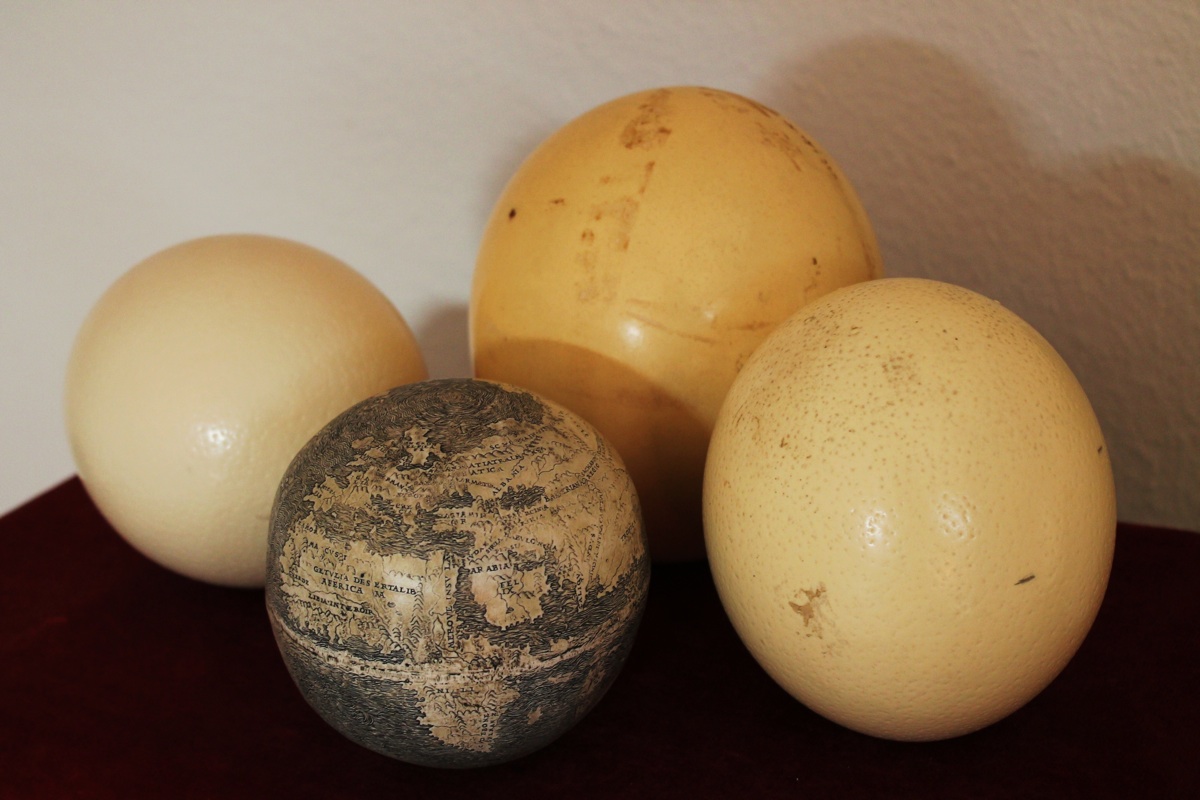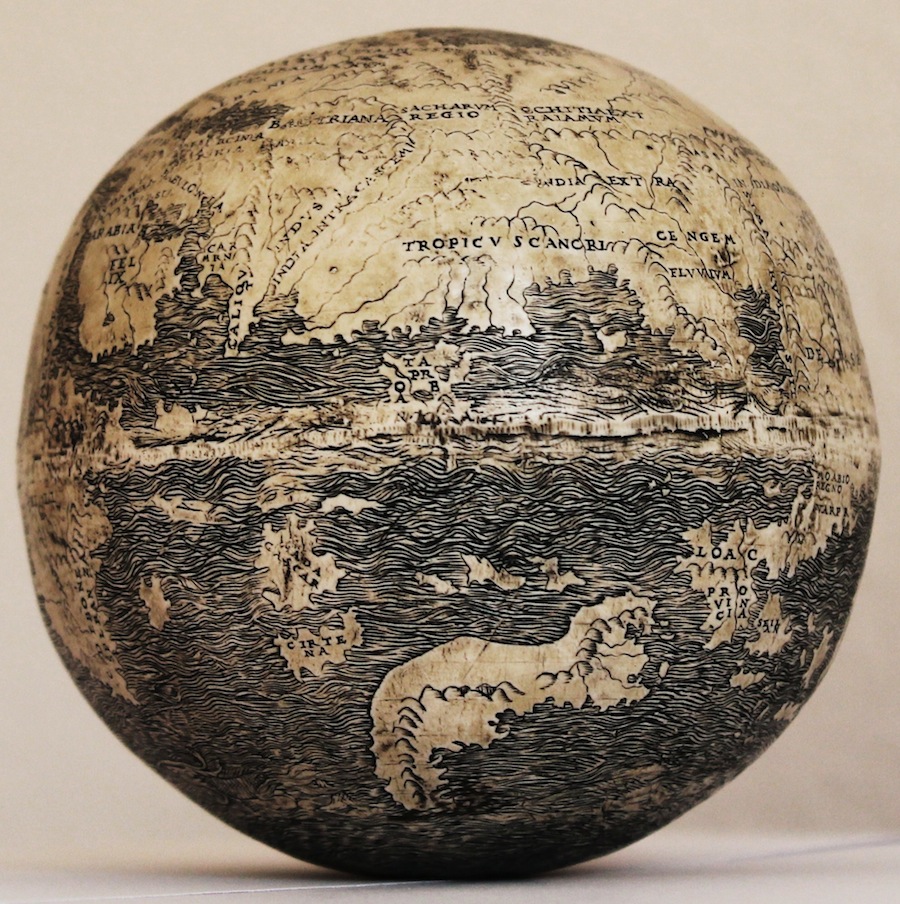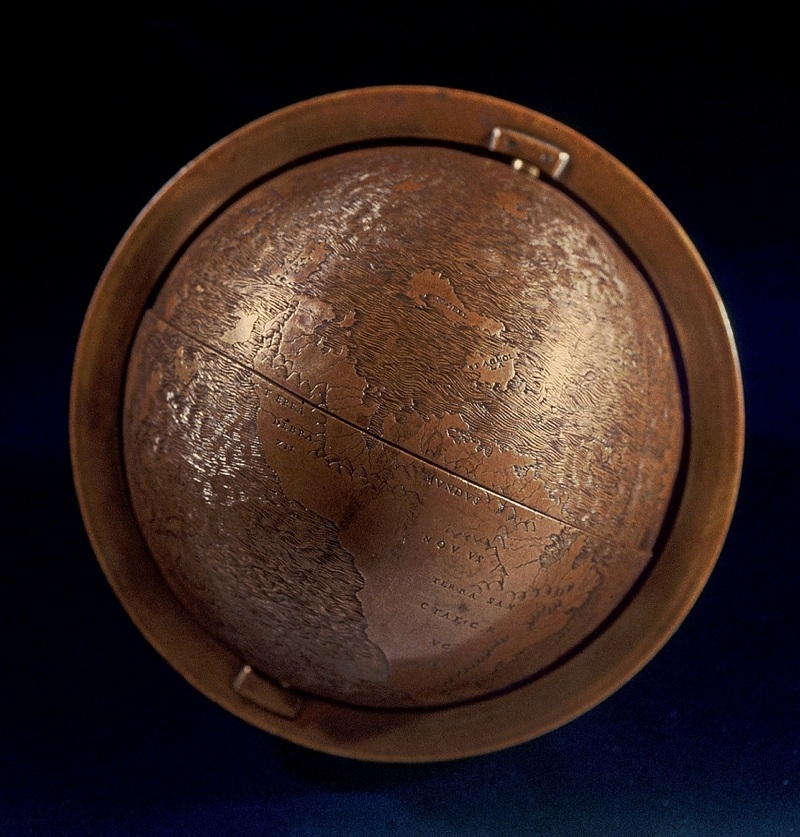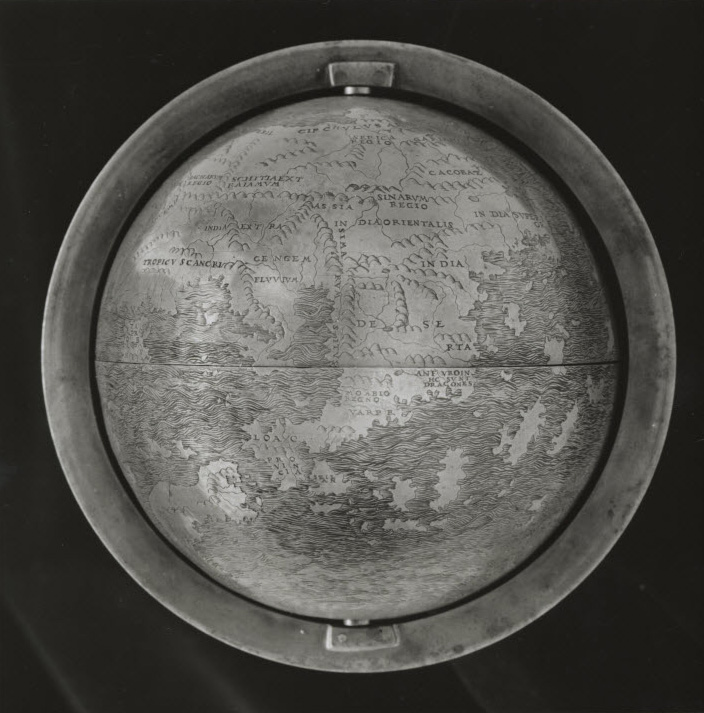Images: Oldest Globe Showing New World
Made From Ostrich Egg

The oldest known globe to represent the New World has been discovered, researchers say.
Dated to the early 1500s, the globe was likely crafted in Florence, Italy, from the lower halves of two ostrich eggs. It is engraved with then-new and vague details about the Americas garnered from European explorers like Christopher Columbus and Amerigo Vespucci. It is also decorated with monsters, intertwining waves and even a shipwrecked sailor, according to the Washington Map Society, which published a study of the artifact in its journal The Portolan.
Ostrich Egg Globe

Asia on the ostrich egg globe, showing the large peninsula jutting southward at the right which is evidence of the influence of Henricus Martellus, a German cartographer who worked in Florence.
New World Globe

The New World on the ostrich egg globe, which bears three names: "TERRA DE BRAZIL," "MVNDVS NOVVS, and "TERRA SANCTAE CRVCIS."
Lenox Globe

S. Missinne, an independent Belgian research scholar analyzed the ostrich egg globe and determined that the grapefruit-sized globe was made around 1504; the globe was likely used to cast the famous copper Lenox globe (shown here) housed at the New York Public Library, which, until now, had been thought to be the oldest globe to show the Americas, dated to 1510.
Mundus Novus

This small Lenox globe (about 5 inches in diameter) is among the first cartographic representations of the Americas known to geographers. Of the two continents in the Western hemisphere, only South America is represented, appearing as a large island with the regional names Mundus Novus (the New World), Terra Sanctae Crucis (the Land of the Holy Cross), and Terra de Brazil (the Land of Brazil). Cuba appears as "œIsabel," and the island shared by the Dominican Republic and Haiti (Hispaniola) appears as "œSpagnolla." North America is represented as a group of scattered islands.
Lenox and Hunt

Holes at its polar points suggest the Lenox globe was originally fixed to a rod, possibly as part of an astronomical clock. The globe is named for the architect Richard Morris Hunt, the architect of the Lenox Library, and for the collector and bibliophile James Lenox.
Finding a Globe

Hunt, the architect, discovered the globe in France and purchased it for the proverbial "song," according to the New York Public Library. He brought it to America in 1855 and later presented it to his patron, James Lenox. In 1937, the globe was mounted by the Library in a bronze armillary sphere. (Shown here, Africa, Europe and the Middle East.)
Get the world’s most fascinating discoveries delivered straight to your inbox.
 Live Science Plus
Live Science Plus






